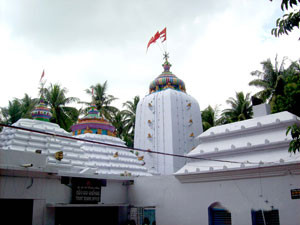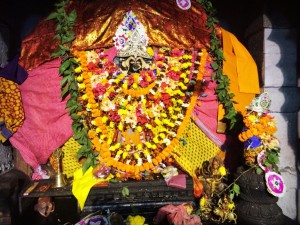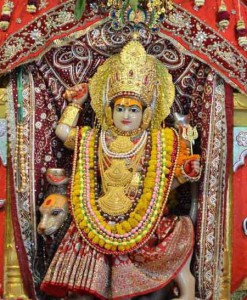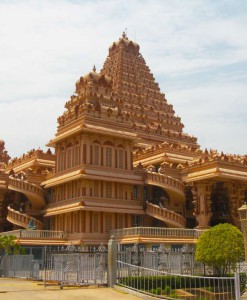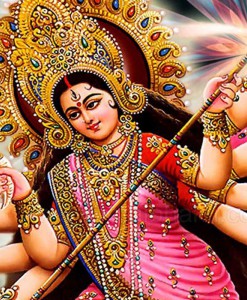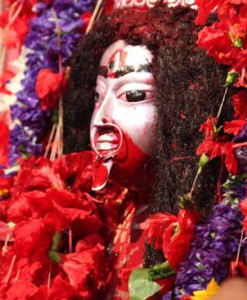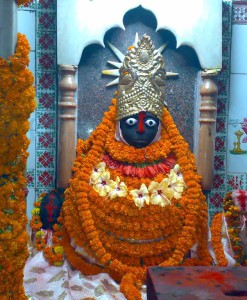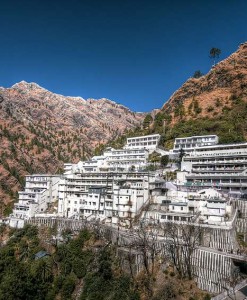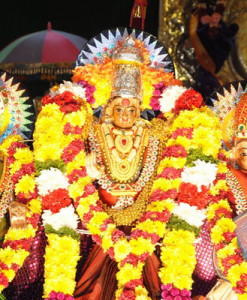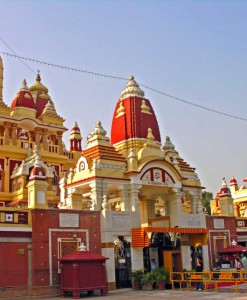No products in the cart.
The Biraja Temple is an historic Hindu temples located in Jajpur (about 125 kilometres (78 mi) north of Bhubaneswar), Odisha, India. The present temple was built during the 13th century. The principal idol is Devi Durga, who is worshiped as Viraja (Girija), and the temple gave Jajpur the nicknames “Viraja Kshetra” and “Biraja Peetha”.
The Durga idol has two hands (dwibhuja), spearing the chest of Mahishasura with one hand and pulling his tail with the other. One of her feet is on a lion, and the other is on Mahishasura’s chest. Mahishasura is depicted as a water buffalo. The idol’s crown features Ganesha, a crescent moon and a lingam. The temple covers a large area, and has several shrines to Shiva and other deities. According to the Skanda Purana it cleanses pilgrims, and it is called the Viraja or the Biraja kshetra. Jajpur is believed to have about one crore of Shiva lingams.
Biraja Temple, Orissa
- Temple History
- Architecture
- How To Reach The Temple
- Daily Poojas And Festivals
- Video
- Additional Information
No historical record is available about the pristine glory of the great mother goddess Biraja before the great epic the Mahabharata was written. There is a reference to Virajah-Tirtha in the Vanaparva of the Mahabharata in chapter 85. Moreover the said epic reiterates that the Virajah-Tirtha was a sacred place for Vedic sacrifices where Dharma, the God of Righteousness had performed a great sacrifice. During the performance of sacrifice Rudra -Siva is said to have been accepted as an Aryan God by other Gods and the mother Earth had appeared in the form of altar. Therefore, it is but natural that the goddess Earth was worshipped as goddess Biraja of the Virajah-Tirtha, Later on. The Ṛigvedic earth goddess was a vaishnavite deity and so became goddess Biraja of the Virajah-Tirtha. The Mahabharata is as old as 7th-6th century B.C. as determined by the scholars. The historicity of goddess Biraja goes back to the days Mother Goddess worship of the Atharva Vedic period i.e. 13th century B.C.
She was originally worshipped in the form of an altar and later on in the form of Stambhesvari (pillar Goddess) as was the primitive practice when carving of stone; metal or wooden images were yet to come about. Most probably she was vindhyavasini and Biraja as they named her. During the Gupta rule in India in the 4th century AD, Goddess Biraja was metamorphosed in the theriomorphic form and a stone image of two-armed Mahisamardini was installed in a temple after a great Vedic sacrifice beside the river Vaitaraṇi. Since then she is being worshipped on the pedestal as the symbol of paramavaiṣnavi Sakti icon. Simultaneously Nabhigaya, a great Pitṛ Tirtha, Isanesvara, lord Varaha and many ancillary deities were added to the Biraja tradition. We are apprised of her greatness from several copper plate grants of Durjaya, Vigraha, Dutta and Maṇa royal dynasties who patronised and revered the deity.
During Bhaumakara rule in 10th -11th century AD, a beautiful temple for Goddess Biraja had been built by Candihar Yayati II. Biraja Kṣetra was made a full-fledged Sakti piṭha with the association of Aṣṭa Candi, Aṣṭa-Bhairava, Navadurga, Sapta Matṛka, Trayodasa Rudra, Dvadasa Gaṇesa, Sixty eight Tirthas and Causaṭhi Yogini during Bhaumakara and Somavamsi period. The Somavamsis added a car festival or Rathayatra with the Biraja tradition like that of the Goddess Vindhyavasini and Sthambhesvari of mid-India. Though during the Mughal Afghan rule the Sakti worship relating to Goddess Biraja faced the ups and downs, the tradition continues undeterred till today.
It is believed that there was a temple for Goddess built during the Gupta rule with a rekha vimana and flat roofed Jagamohan at Jajpur. During the rule of the Somavamsis Candihar Yayati-II had constructed a magnificent temple; the said temple had been destroyed during the Afghan conquest in the year 1568 AD. In the first half of the 19th century a zamindar of Jajpur named Sudarsan Mohapatra had reconstructed and repaired the temple that we found at present.
The height of the temple is 70ft with the original padmapiṭha (lotus pedaled piṭha) and a pidha Jagamohan on the original flat-roofed Jagamohan the candimaṇḍapa has been constructed in front of the Jagamohan for the purpose of worship and recital of Devi-mahatmya (saptasati candi) the temple walls bear fragmentary sculptures of different periods of history i.e. from the 4th century AD to the 15th century AD. There are several temples inside the complex namely Nabhigaya, Jūpesvara, Isanesvara, Mṛtyunjayesvara, Bhuṣaṇḍesvara, Vagalamukhi etc. and a large number of sivalingams preserved and worshipped in separate shrines also.
The compound wall had been built by a saint Bhikari Das just before one hundred and ten years back. The compound wall bears a good number of Bhaumakara sculptures and images belonging to 8th -10th century AD. The lion-gate of the compound wall is very beautiful and magnificent.
By Road: The Biraja Temple is situated at Jajpur in Orissa state of India. Bhubaneshwar is well connected to other major cities of the country via regular buses.
By Rail: It is well connected through nearest Bhubaneshwar railway station
to major cities railway stations like Delhi, Agra, Mumbai, Chennai, Ajmer, Pali, Jaipur, Ahmedabad.
By Air: The nearest Airport is Bhubaneswar Airport which is well connected with regular domestic flights to Delhi, Mumbai.
Temple remains open from 6am to 9pm. The primary ritual in the temple is Sharadiya Durga Puja, which begins on the night of Krishna Paksha Ashtami. This falls before Mahalaya, and ends on Ashwin Shukla Paksha Navami. The puja, known as Shodasha Dinatatmika Puja, lasts for 16 days. The ratha (chariot festival) is known as Simhadhwaja, and its flag bears a lion. During the lunar transition from Shukla Ashtami to Shukla Navami an animal sacrifice, Bali Daanam, is performed. Navratri is celebrated as Aparajita Puja.
Other festivals include Nakshatra, Shravana, Prathamastami, Pana Sankranti, Raja Parva and Navanna. Devi is worshiped daily in accordance with Tantra and Agama traditions as Mahishasuramardini by the Brahmins of Jajpur.
Tourists who visit this place must obviously visit all the 8 temples from outside at least, because most of the 8 temples are not functional now. The 8 main Shiva lingams that are found in these 8 temples are Kanakeswar, Swapneswar, Aisneswar, Kapileswar, Baidhyanatheswar, Baneswar and Lokanatheswar. The Ganesh temple in the vicinity is a huge attraction because of the rare position of the God.



